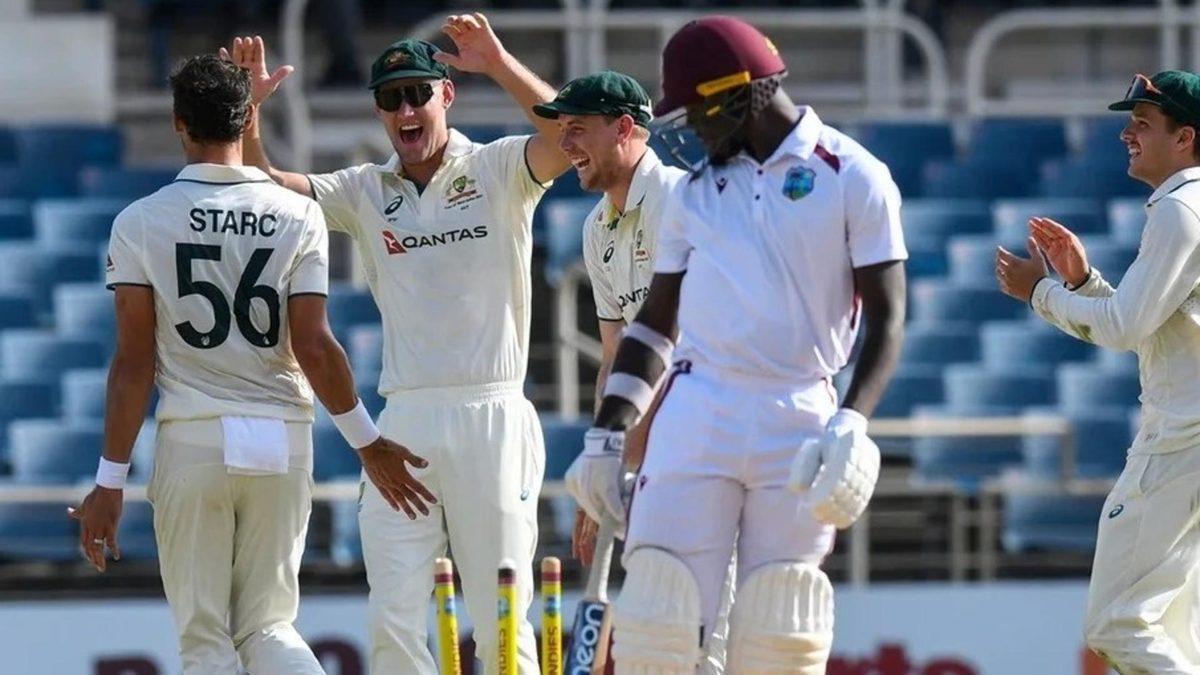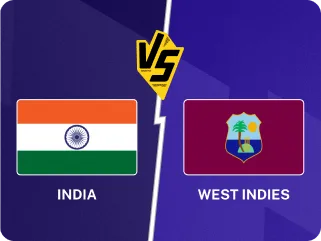
A plethora of records was broken when Australia shot out the West Indies for 27 at the Sabina Park Cricket Ground in Kingston.
Chasing 204 at Kingston, the West Indies ran into early trouble when Mitchell Starc struck with the first, fifth, and sixth balls of the first over to leave them reeling at 0-3. Starc became the second bowler to take three wickets in the first over of an innings in men’s Test cricket, after Irfan Pathan, who completed a hat-trick in the first over of the Karachi Test of 2005/06.
Starc’s second over went wicketless, but he struck with the first and third balls of his third over to become the first bowler in history to complete a five-wicket haul within 15 balls. The previous record was held by Ernie Toshack, Stuart Broad, and Scott Boland.
Starc’s quintuple-strike reduced the West Indies to 7-5, the joint second-lowest total at the fall of the fifth wicket. India had been 6-5 at The Oval in 1952, while Australia had also been 7-5 at Manchester in 1888. Both these were against England.
The West Indies then became 11-6, yet again the joint second-lowest total at the fall of the sixth wicket. Australia had been 7-6 at Manchester in 1888 and 11-6 at The Oval in 1896, both against England.
The wicket also meant that the top six West Indians had four runs between them, the lowest ever: the Australian top six had 12 runs against England at Sydney in 1887/88. The four ducks from the top six are also the joint-most (there are three previous instances of four ducks in the top six).
The West Indies reached 26-6 before Boland became the 10th Australian to complete a Test hat-trick (Hugh Trumble and Jimmy Matthews did it twice).
A run later, the West Indies were bowled out for the second-lowest total in Test match history, after New Zealand’s 26 against England at Auckland in 1954/55. This was also the lowest total in the fourth innings of a Test and the lowest in a day-night Test match.
At 14.3 overs, this was also the third-shortest all-out Test innings. England had bowled out South Africa for 30 in 12.3 overs at Birmingham in 1924, while South Africa had bowled out Sri Lanka for 42 in 13.5 overs at Durban in 2024/25.
Seven West Indians – John Campbell, Kevlon Anderson, Brandon King (Starc’s first-over victims), Roston Chase, Shamar Joseph, Jomel Warrican (the last two wickets of Boland’s hat-trick), and Jayden Seales fell for ducks, setting a new world record. There were nine previous instances of six in men’s Test cricket, the most recent being India’s at Cape Town in 2023/24.
Starc finished with 6-9 to become the seventh bowler to take six wickets or more in an innings while conceding fewer than 10 runs. Boland (6-7) features on this list as well, as does Starc’s former captain, Michael Clarke (6-9).
Starc’s 6-9 were also the first five-wicket haul by a fast bowler as well as the best figures by anyone in their 100th Test match. The others are Muttiah Muralidaran (6-54), Shane Warne (6-161), R Ashwin (5-77), and Anil Kumble (5-89).
Over the course of his spell, Starc became the 18th cricketer and fourth Australian to 400 Test wickets. Among left-arm fast bowlers, only Wasim Akram (414) has more Test wickets than his 402.
Not quite a record, but Starc now has 81 wickets in day-night Tests, the most by the proverbial mile. With 43 apiece, Pat Cummins and Nathan Lyon are distant seconds. Of the 24 day-night Tests in history, Australia have played in 14 and lost 13.
This was the 15th decided Test match in history when no batter reached a fifty (Steve Smith’s 48 was the highest score). Of these, only three others (England versus Australia, Birmingham 1981; New Zealand versus India, Hamilton 2002/03; India versus South Africa, Nagpur 2015/16) were after the Wars.








